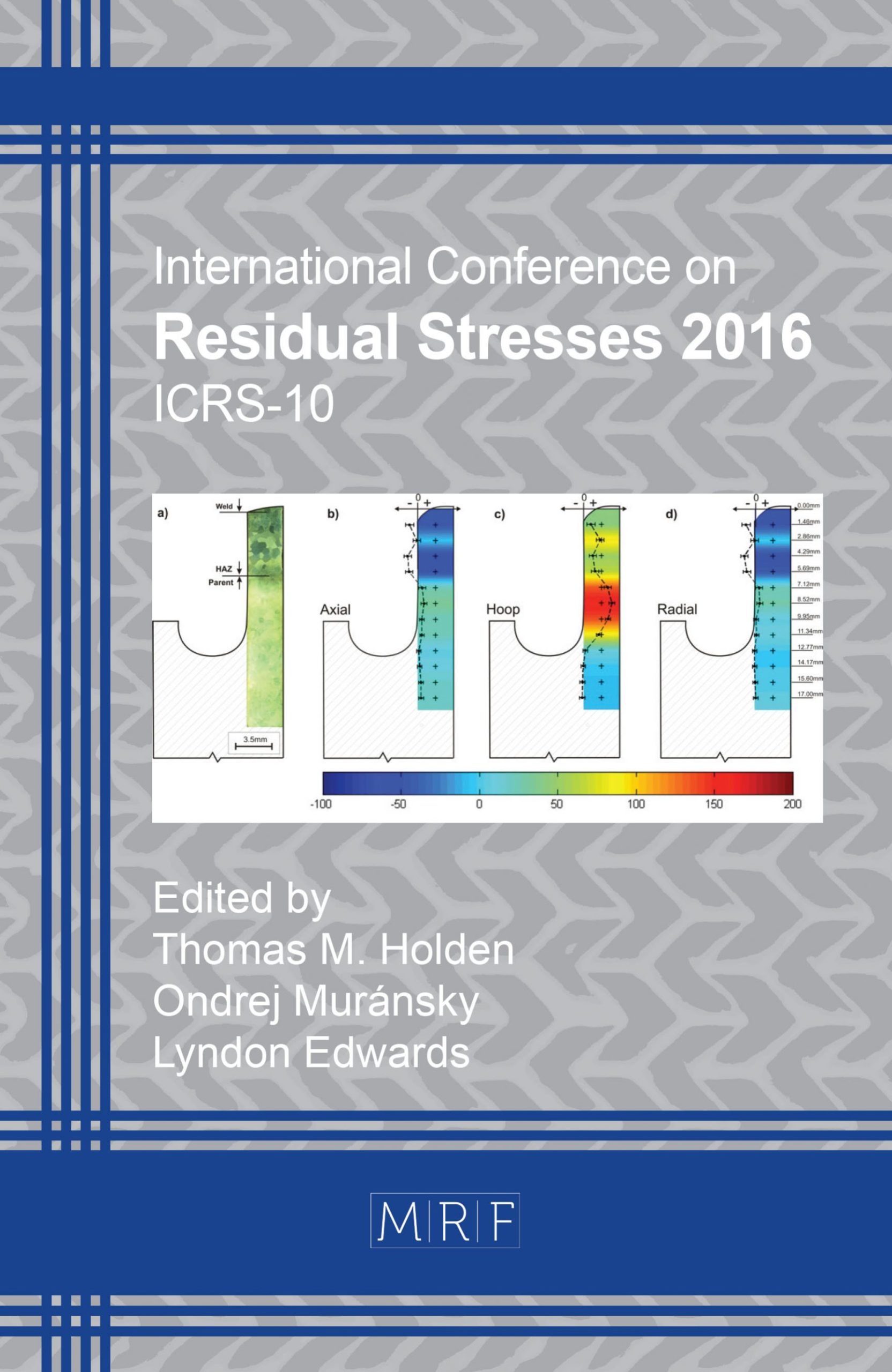Combining Sectioning Method and X Ray Diffraction for Evaluation of Residual Stresses in Welded High Strength Steel Components
A. Kromm, M. Rhode, B. Launert, J. Dixneit, T. Kannengiesser, H. Pasternak
download PDFAbstract. Residual stresses and distortions in welded I girders for steel construction are relevant when evaluating the stability of steel beams and column members. The application of high strength steels allows smaller wall thicknesses compared to conventional steels. Therefore, the risk of buckling has to be considered carefully. Due to the lack of knowledge concerning the residual stresses present after welding in high strength steel components conservative assumptions of their level and distribution is typically applied. In this study I girders made of steels showing strengths of 355 MPa and 690 MPa were welded with varying heat input. Due to the dimension of the I girders and the complex geometry the accessibility for residual stress measurement using X ray diffraction was limited. Therefore, saw cutting accompanied by strain gauge measurement has been used to produce smaller sections appropriate to apply X ray diffraction. The stress relaxation measured by strain gauges has been added to residual stresses determined by X ray diffraction to obtain the original stress level and distribution before sectioning. The combination of both techniques can produce robust residual stress values. From practical point of view afford for strain gauge application can be limited to a number of measuring positions solely to record the global amount of stress relaxation. X ray diffraction can be applied after sectioning to determine the residual stresses with sufficient spatial resolution.
Keywords
Weld Residual Stress, Sectioning Method, X Ray Diffraction
Published online 12/22/2016, 6 pages
Copyright © 2016 by the author(s)
Published under license by Materials Research Forum LLC., Millersville PA, USA
Citation: A. Kromm, M. Rhode, B. Launert, J. Dixneit, T. Kannengiesser, H. Pasternak, ‘Combining Sectioning Method and X Ray Diffraction for Evaluation of Residual Stresses in Welded High Strength Steel Components’, Materials Research Proceedings, Vol. 2, pp 163-168, 2017
DOI: http://dx.doi.org/10.21741/9781945291173-28
The article was published as article 28 of the book Residual Stresses 2016
![]() Content from this work may be used under the terms of the Creative Commons Attribution 3.0 licence. Any further distribution of this work must maintain attribution to the author(s) and the title of the work, journal citation and DOI.
Content from this work may be used under the terms of the Creative Commons Attribution 3.0 licence. Any further distribution of this work must maintain attribution to the author(s) and the title of the work, journal citation and DOI.
References
[1] H. Pasternak, B. Launert, T. Krausche, Welding of Girders with Thick Plates – Fabrication, measurement and simulation, Journal of Constructional Steel Research 115 (2015) 407-416. http://dx.doi.org/10.1016/j.jcsr.2015.08.037
[2] T. Nitschke-Pagel, H. Wohlfahrt, Residual Stresses in Welded Joints – Sources and Consequences, Mater. Sci. Forum 404-407 (2002) 215-226. http://dx.doi.org/10.4028/www.scientific.net/MSF.404-407.215
[3] J. Hensel, T. Nitschke-Pagel, K. Dilger, S. Schönborn, Effects of Residual Stresses on the Fatigue Performance of Welded Steels with Longitudinal Stiffeners, Materials Science Forum 768-769 (2014) 636-643. http://dx.doi.org/10.4028/www.scientific.net/MSF.768-769.636
[4] N. Tebedge, G. Alpsten, L. Tall: Residual-stress Measurement by the Sectioning Method, Experimental Mechanics, 13 (1973) 88–96. http://dx.doi.org/10.1007/BF02322389
































